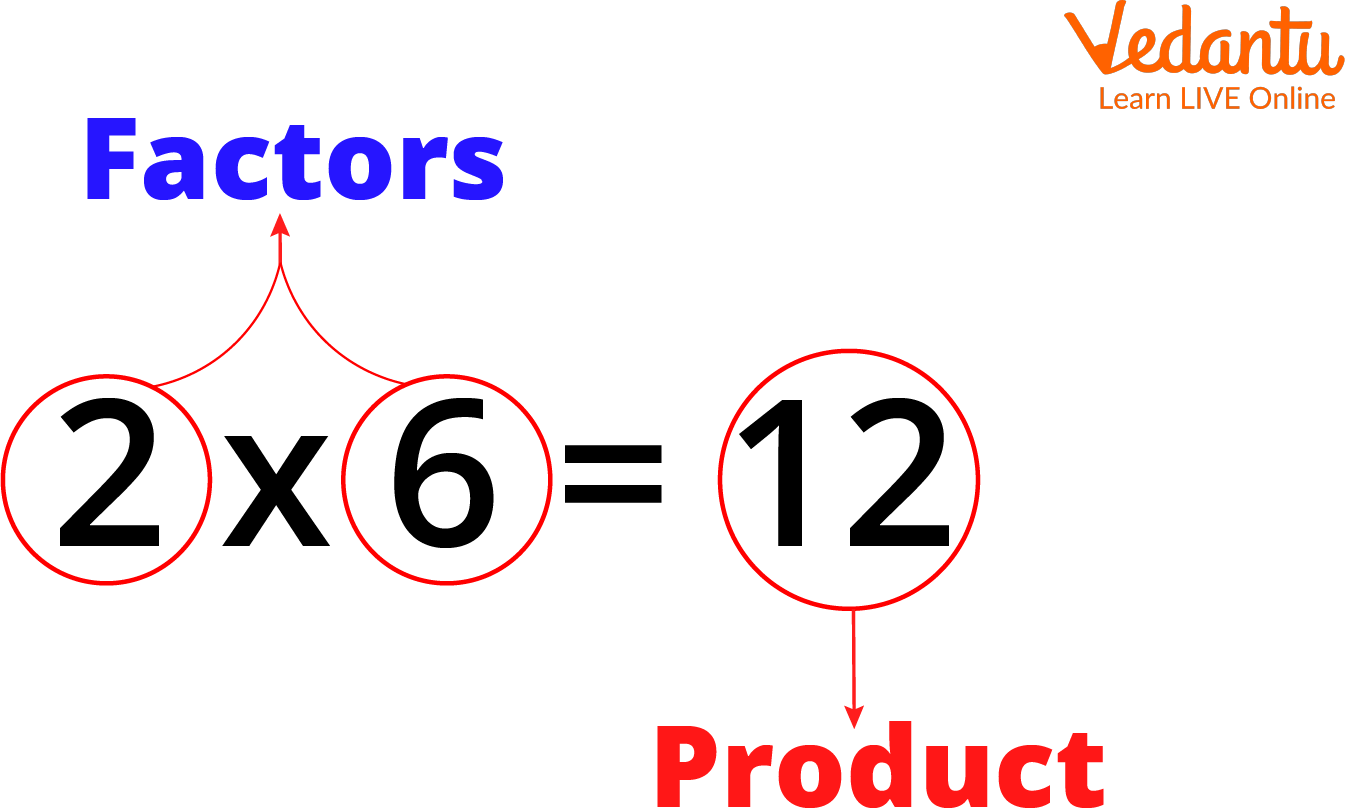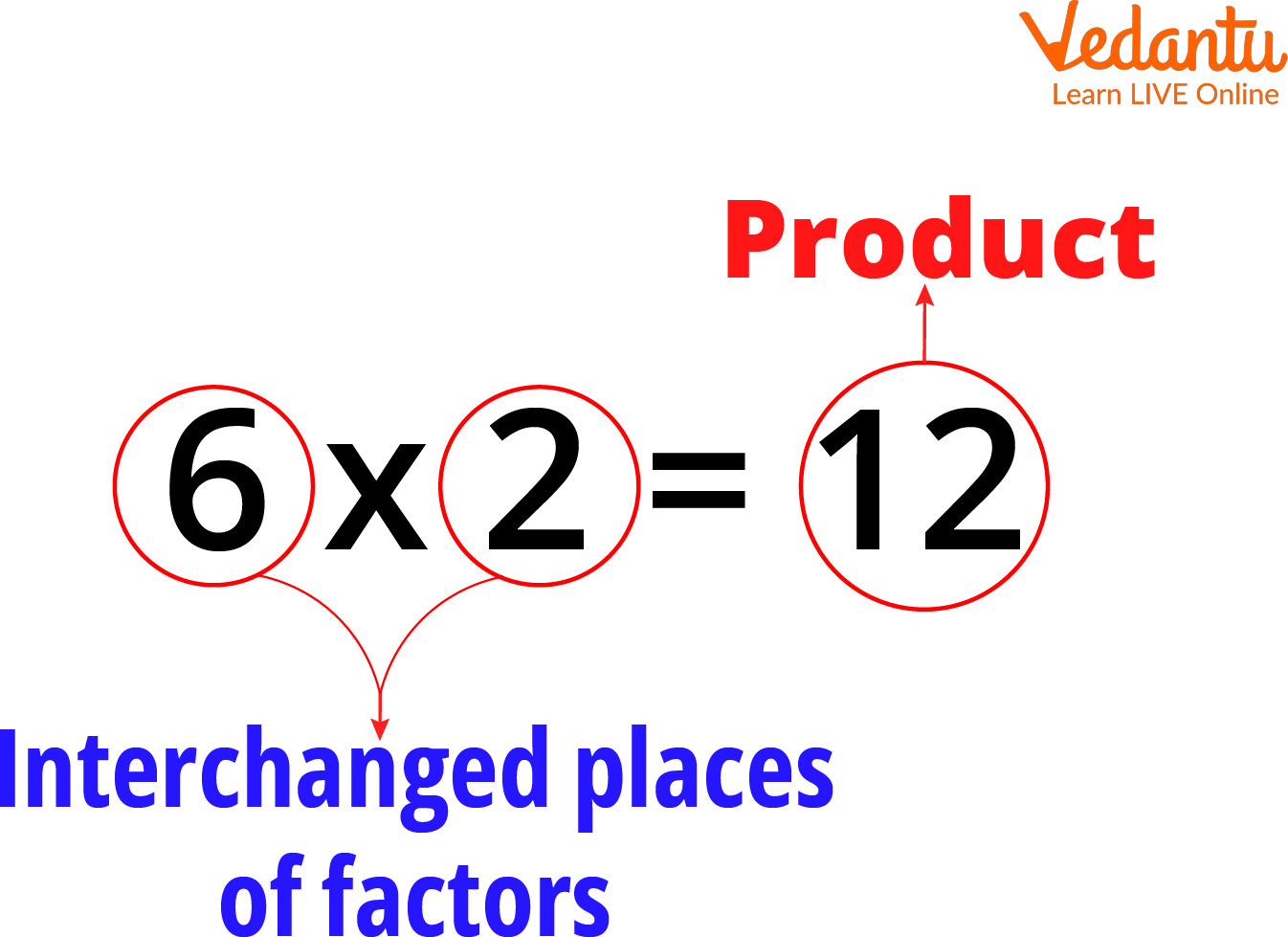




How to Find Factors Using the Multiplication Method with Examples
Factors can be defined as the numbers that divide a number without leaving any remainder. These numbers are usually whole numbers, which, when multiplied with other whole numbers, give products. We can find the factors by using methods like factorization, multiplication tables, and division. The first and simplest method for finding factors is by using the multiplication method. Today you will learn to find factors by the multiplication method.
What are Factors and Multiplication Facts?
As said above, when two whole numbers are multiplied to give us a product, the whole numbers are called the factors. For example, have a look at the image below.

Factors and Their Product
In the image above, you can see that 2 and 6 are multiplied together to give 12 as a product, so we can write that 2 and 6 are the factors of 12. If you know about multiplication, you must already know that 2 is a multiplicand, 6 is the multiplier, and 12 is the product. If you need to learn about multiplicands and multipliers, observe that 2 in the above picture is multiplied by 6 and gives 12. So, 2 is the multiplicand, 6 is the multiplier, and 12 is the product. Therefore, a multiple or a multiplication factor is a product of multiplication factors.
And according to the definition of factor, both multiplicand and multiplier are factors. The multiplicand and multiplier can also change places, as shown below.

Changed Places of Multiplicand and Multiplier
So, this is what a multiplication factor is. On the other hand, the product is known as multiple or multiplication facts. This is how you can identify factors and multiplication facts.
How to Find Factors and Multiples by Using Multiplication Facts?
Have a look at the chart below. You can see that all the multiplication results are 10, and these are the multiplication facts. You can see that 1, 2, 5, and 10 are multiplied to get the multiplication fact of 10. Hence, 1, 2, 5, and 10 are the factors of 10.
Image: Factors and multiples chart,
Therefore, to calculate the factors using multiplication facts, you have to write the multiplication facts and their multiples. First, you must start with one because one is a factor in every number. Then check and proceed with every number one by one, as done above. This is how you can use the multiplication method to find factors with the help of multiplication facts.
Examples of Factors and Multiplication Facts
Let us see some examples where you can use multiplication facts to find factors.
(i) Determine the factors of 15
since one has to always start with one,
$1 \times 15 = 15$.
You can see that 1 and 15 are factors of 15.
We can also write that
$3 \times 5 = 15$
Hence, the above expression was put in place of 15 on the left side.
Thus, the factors of 15 are 1, 15, 3, and 5.
(ii) Find factors of 24.
As always, one has to start with 1.
$1 \times 24 = 24$
You can expand the above expression by checking the divisibility one by one,
$2 \times 12 = 24$
One more expression that can be written is,
$3 \times 8 = 24$
Therefore, the factors of 24 are 1, 2, 3, 8, 12, and 24.
Conclusion
You have learnt that we can find factors using division and multiplication. You have learnt about factors, multiplication facts, multiplicands, multipliers, and multiples. The product of multiplication is called multiple, and multiplicands and multipliers are called factors. Multiplication facts determine the factors if you use the multiplication method.
FAQs on Factors by Multiplication Method: Step-by-Step Guide
1. What is the 'factors by multiplication method'?
The factors by multiplication method is a technique used to find all the factors of a number by identifying all the unique factor pairs. A factor pair consists of two whole numbers that, when multiplied together, result in the original number. For example, to find the factors of 12, you would look for pairs like 1 × 12, 2 × 6, and 3 × 4.
2. How do you find all the factors of 36 using the multiplication method?
To find the factors of 36 using the multiplication method, you systematically list all the pairs of numbers that multiply to 36.
- Start with 1: 1 × 36
- Check 2: 2 × 18
- Check 3: 3 × 12
- Check 4: 4 × 9
- Check 5: 5 is not a factor.
- Check 6: 6 × 6
Once the factors start repeating (like 9 x 4 after 4 x 9), you have found all the pairs. The unique factors of 36 are 1, 2, 3, 4, 6, 9, 12, 18, and 36.
3. What is the main difference between finding factors by multiplication versus the division method?
The primary difference lies in the approach. The multiplication method focuses on building up to the number by finding pairs that multiply to it (e.g., 4 × 5 = 20). In contrast, the division method involves breaking down the number by checking which smaller numbers divide into it without leaving a remainder (e.g., 20 ÷ 4 = 5). Both methods yield the same set of factors but encourage different ways of thinking about number relationships.
4. How can you ensure you have found all the factors of a number using multiplication and haven't missed any?
To avoid missing any factors, you must work systematically. Start with the number 1 and check each subsequent whole number (2, 3, 4, and so on) to see if it forms a factor pair. Continue this process until you reach a point where the two factors in a pair are the same or have swapped places. For example, when finding factors for 36, once you reach 6 × 6, you know you don't need to check further because the next pair would be 9 × 4, which you have already found.
5. What are the first two factors you should always identify when using the multiplication method?
For any whole number greater than 1, the first and most fundamental factor pair to identify is always 1 and the number itself. This is because any number multiplied by 1 equals that number. For instance, if you are finding the factors of 50, your starting point is the pair 1 × 50. All other factors will lie between these two numbers.
6. Why is the multiplication method useful for smaller numbers, and what is a better approach for very large numbers?
The multiplication method is excellent for smaller numbers because it is intuitive and helps build a strong conceptual understanding of how numbers are composed. However, it becomes very time-consuming and inefficient for very large numbers. For large numbers, a more advanced approach like prime factorization is better. By breaking the number down into its prime building blocks, you can then systematically find all possible combinations of those primes to determine every single factor.
7. How does finding factors by multiplication relate to the concept of prime factorization?
Finding factors by multiplication is a foundational skill that leads to understanding prime factorization. While the multiplication method helps you find all factors (both prime and composite), prime factorization is the specific process of finding only the set of prime numbers that multiply to create the original number. For example, using the multiplication method for 12 gives factors 1, 2, 3, 4, 6, 12. Prime factorization of 12 gives you its core prime building blocks: 2 × 2 × 3.























